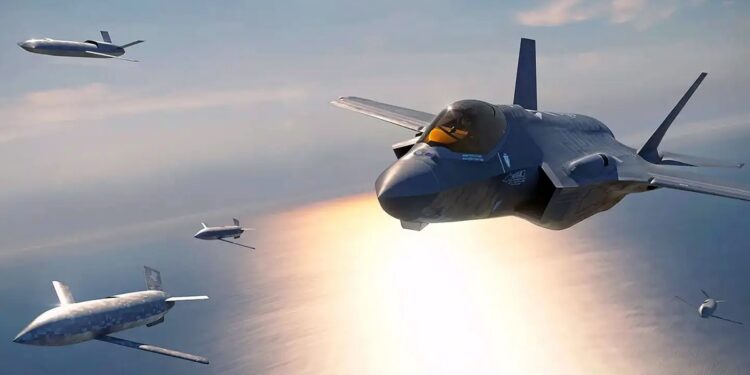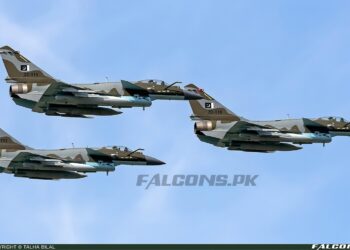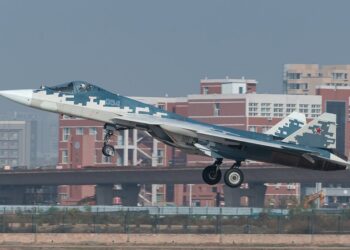By Joseph Trevithick
The U.S. Air Force says it is laying the groundwork for accelerated production of the future AIM-260 Joint Advanced Tactical Missile, or JATM. The service is doing this, in part, to help ensure there are enough of these air-to-air missiles to arm its coming fleets of advanced drones with high degrees of autonomy, currently referred to as Collaborative Combat Aircraft, or CCAs.
Armed with these missiles, these uncrewed aircraft, which are expected to work closely with current and next-generation combat jets, could help significantly extend the reach of their crewed counterparts. In doing so, they could potentially enhance lethality and survivability drastically.
Air Force Chief of Staff General Charles Q. Brown highlighted JATM’s relevance to the CCA program while testifying before members of the Senate Armed Services Committee earlier today. Brown was responding to a question about what steps his service was taking to make sure it would have enough missiles to reasonably arm its future CCAs and their crewed companions.
Earlier this year, Secretary of the Air Force Frank Kendall announced that his service was planning around acquiring at least 1,000 CCAs, if not more, as well as some 200 examples of a future sixth-generation combat jet. Both of these programs are part of a larger, multi-faceted modernization effort called Next Generation Air Dominance (NGAD). The 1,000 CCA figure was based on a concept of operations involving pairing two of those drones with each of the 200 NGAD combat jets and 300 F-35A Joint Strike Fighters.
“Extra [missile] funding will help to facilitize [sic] so… we can increase the production rate not only for AMRAAM [the AIM-120 Advanced Medium Range Air-to-Air Missile], but JATM, which is a follow-on to AMRAAM,” Brown said. JATM “is also going to be an important aspect to support the Collaborative Combat Aircraft.”
The extra funding Brown was talking about here refers to requests in the Air Force’s proposed 2024 Fiscal Year budget for money to cut multi-year missile procurement contracts. The service is asking for roughly $1.5 billion in total to put it on a firm track to buy more AMRAAMs, as well as AGM-158 Joint Air-to-Surface Standoff Missile (JASSM) series cruise missiles and examples of the AGM-158C Long Range Anti-Ship Missile derivative, in the coming years.
The Air Force has previously said that the multi-year AMRAAM buy, specifically, will help provide a bridge to the introduction of the JATM.
The Fiscal Year 2024 budget request contains, “along with some AMRAAM investment, some facilitization [sic] money that will help us get to JATM faster,” Lt. Gen. Richard Moore, vice chief of staff of the Air Force for Plans and Programs, said last month during a panel discussion hosted by the Air & Space Forces Association’s Mitchell Institute for Aerospace Studies. “Once we can start procuring it, we’ll get to quantity as fast as we can.”
Details about the AIM-260, including its expected capabilities and when it might begin to enter service, are limited. The Air Force disclosed the existence of the JATM program, which it is running together with the U.S. Navy, in 2019. At that time, the service said it expected initial flight testing of the missile to wrap up in 2021 and then operational testing would begin sometime in 2022. Last year, Air Force Maj. Kevin Autrey, the lead F-22 Raptor operational test pilot with the 422nd Test and Evaluation Squadron at Nellis Air Force Base in Nevada told The War Zone in an interview that preparations were being made to begin live fire testing in the summer of 2023.
Speaking at the panel talk in April, Lt. Gen. Moore had insisted that there was no delay in the JATM program. “We want to get to JATM as quickly as we possibly can,” he added.
Otherwise, the missile’s development has since been shrouded in heavy secrecy within a so-called Special Access Program (SAP). So sensitive are these weapons that the Air Force asked for around $6.5 million in Fiscal Year 2020 to build a special secure storage facility for them at Hill Air Force Base in Utah.
We do know that a significant increase in range is a major focus of the JATM program. It seems reasonable that JATM would be able to fly the latest AIM-120D-3 variant of the AMRAAM further, the range of which is classified, but believed to be between 75 and 100 miles, depending on the launch envelope and other factors.
Air Force officials have said in the past that Chinese very long-range air-to-air missile developments, and the PL-15 missile in particular, which may have a range up to 124 miles, were key drivers behind work on the AIM-260. What kind of advanced propulsion arrangement the JATM will use to achieve that range has not yet been disclosed, but ramjets and dual-pulse rocket motors have been suggested as possible options.
It seems very possible that the AIM-260 could have a multi-mode seeker arrangement, possibly including active radar and imaging infrared seekers. This would help its accuracy and its resistance to radio-frequency electronic warfare attacks and other countermeasures. Being able to home on something other than a radar signature would be especially useful when engaging low-observable (stealthy) targets.
Especially given its extended range, it seems all but certain that JATM will have a two-way datalink, just like the AIM-120D-3, too. A link like this allows the weapon to receive mid-course targeting updates or be redirected altogether.
All of this is expected to fit inside an AIM-260 missile that has a similar, if not identical form factor to later-generation variants of the AIM-120. This is extremely important to ensure its ability to be carried internally by the Air Force’s F-22 Raptor stealth fighters, as well as F-35 variants across the U.S. military. Stealth combat jets, in general, have to carry stores internally to maximize their low-observable (stealthy) characteristics.
The F-22 is expected to be one of, if not the first aircraft to be armed with the AIM-260. There are also plans to integrate into all three variants of the F-35, as well as the Air Force’s F-15EX Eagle II and the U.S. Navy’s F/A-18E/F Super Hornet fighters.
Gen. Brown’s disclosure today that the Air Force’s future CCA drones, which the service is developing increasingly in cooperation with the Navy, are also expected to be armed with AIM-260s is new, but hardly surprising. The service has repeatedly said that the first role it envisions for these advanced uncrewed aircraft is as weapons platforms to support fifth-generation stealth fighters, including the future NGAD jet, in aerial combat. CCAs are expected to eventually perform other missions and could work with fourth generation combat jets and other aircraft.
“We see three kinds of basic mission sets for collaborative Combat Aircraft. The first is the ability to augment the combat force as shooters. The second is the ability to conduct electronic warfare and the third is the ability to be sensors in the battle space,” Lt. Gen. Moore had explained at another hearing before a subcommittee of the House Armed Services Committee in March. “We’ll concentrate first on the ability for CCA to augment shooters and to be shooters themselves.”
Adding the extended range of the AIM-260 to this equation can only further extend the ‘reach’ of the future CCA drones. Those uncrewed aircraft are already expected to be able to operate well forward of the crewed platforms they’re teamed with, further expanding the overall area the entire flight group could conceivably hold at risk. Off-board targeting data, fed to the CCAs directly or their crewed companions, could give the drones even greater abilities to engage threats they might not even be able to ‘see’ themselves. This would also help keep the entire group that much further away from hostile aircraft or air defenses down on the surface.
“The analysis that we’ve done shows that the adversary has to honor each of those [CCA] aircraft as it is a full threat. And that gives you a great advantage relative to the cost of having those things in the air,” Secretary of the Air Force Kendall said today while testifying at the same hearing alongside Gen. Brown. “It both increases the targeting problem, but also gives them [the enemy] tactical dilemmas that he doesn’t have to face right now [which] we can.”
“We can sacrifice one of these aircraft, put it well out in front, use it to draw fire and force the other side to expose itself and then be subject to engagement,” Kendall continued. “We call them attritable. They’re not expendable. But we can afford to lose on them operationally. There’s nobody in them that we’re going to lose. So it changes our tactical options.”
All of this speaks to the broader expected benefits of CCAs, overall. For instance, when working as part of a larger networked crewed-uncrewed team, only a portion of the drones, at most, might actually need to carry radars or other sensors at all. The rest could conceivably be configured purely as weapons trucks, receiving targeting information for other platforms. This would help reduce their cost and complexity.
“Our analysis shows… by augmenting crewed aircraft with relatively inexpensive CCAs you get a net combat capability, which is much more significant than if you tried to do it with all fully crewed aircraft,” Secretary Kendall said today. “One way to think about it is that the pod or the weapon that might have been under the wing of a crewed aircraft is now flying in separate aircraft and managed by that commander of that [crewed] aircraft.”
Thanks to the hearing today, we know that one of those weapons will be the AIM-260, which will only further increase the combat capabilities offered by the CCAs.






